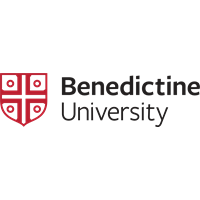Below is a summary of the abstract you submitted. Presenting author(s) is shown in bold.
If any changes need to be made, you can modify the abstract or change the authors.
You can also download a .docx version of this abstract.
If there are any problems, please email Dan at dar78@pitt.edu and he'll take care of them!
This abstract was last modified on March 16, 2021 at 3:40 p.m..

SEA-PHAGES (Science Education Alliance-Phage Hunters Advancing Genomics and Evolutionary Science) is a two-semester program that promotes undergraduate research. Benedictine University is one of three schools in Illinois to join this prestigious program. Our school is currently piloting SEA-PHAGES within our freshmen biology courses. In Fall 2020, our biology laboratory did a bioinformatics project on Mycobacterium Phage Twitch. This phage was initially identified in 2013 by student Lauren Sellers from Hope College, Holland, MI. Twitch is a temperate phage from the Siphoviridae family with a 59,711 bp genome. This phage was placed in the K cluster as it infects the genus Mycobacteria, specifically, Mycobacterium smegmatis mc2 155. Our goals for this project were to propose for each genomic region: gene potential, starts, gene product function, and genomic conservation. We utilized the program DNA Master to annotate the phage genome. To make predictions for each genomic sequence, we utilized several online bioinformatics programs starts (GeneMark, Starterator, BLAST), conservation (Phamerator), and structure/function (HHPRED, TMPRED, TMHMM). We trained in research writing, presentation, and teamwork skills. Our initial genome was predicted to have 96 genes. Based on the data collected, we proposed to delete 1 gene, predicted 3 new genes, and edited 8 genes starts. We also identified 1 Tryptophan tRNA. After quality control, all changes proposed except for 1 new gene were accepted. The resulting Twitch genome has 97 genes with at least 40 genes with a predicted function. In the future, we would like to study phage Twitch in the laboratory and determine some of its predicted gene product functions. We would like to thank SEA PHAGES for their technical support throughout the semester and the students from our cohort for their research contributions to this project.
